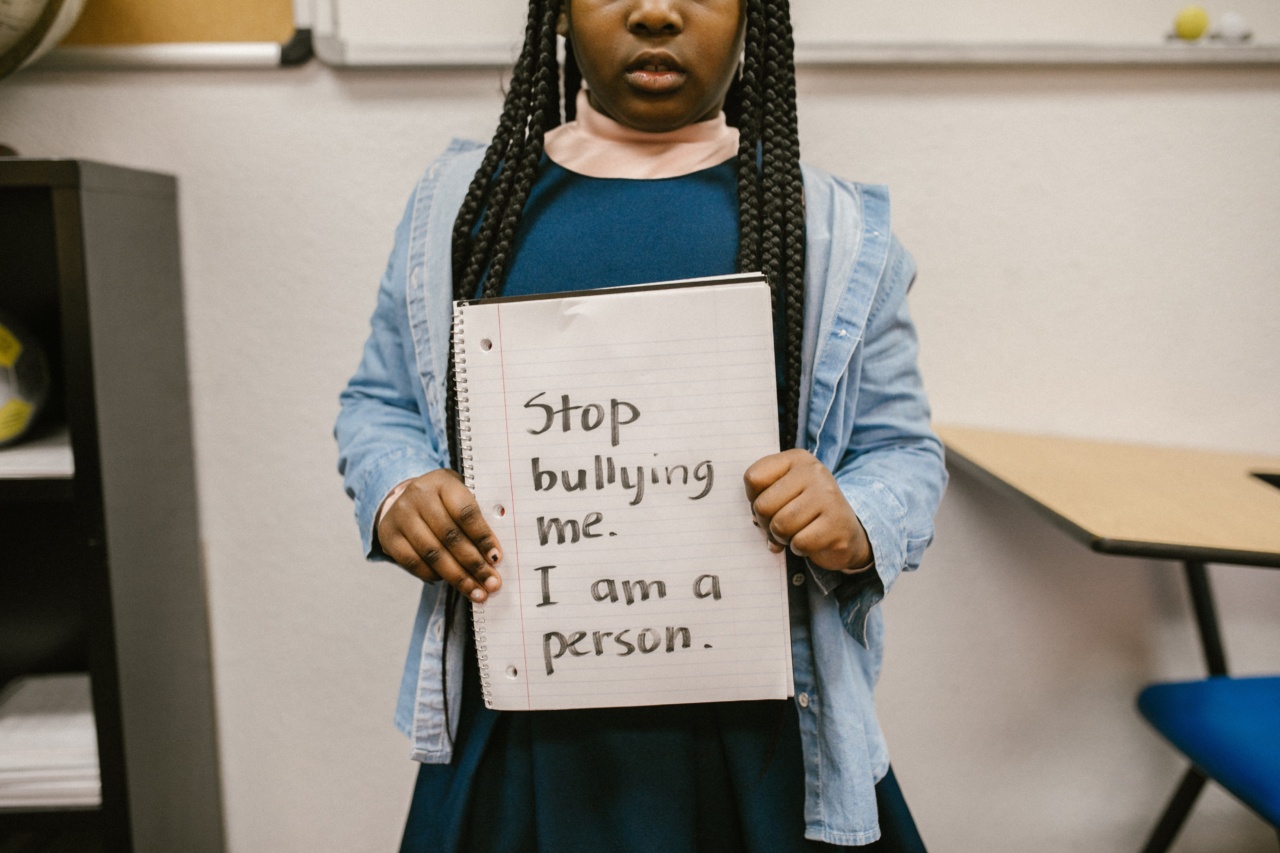Bullying in the classroom is a serious issue that can have long-lasting effects on students. It can lead to decreased self-esteem, depression, anxiety, and poor academic performance.
As educators, it is our responsibility to create a safe and inclusive learning environment where every student feels valued and respected. In this article, we will explore effective strategies to prevent bullying in the classroom.
1. Promote a Positive Classroom Culture
The first step in preventing bullying is to establish a positive classroom culture where kindness, empathy, and respect are valued. Encourage open and honest communication among students, and model positive behavior yourself.
Create a classroom environment that celebrates diversity and teaches students the importance of treating others with kindness and empathy.
2. Educate Students about Bullying
Many students may not fully understand what bullying is and how it can impact others. Take the time to educate students about different types of bullying, such as verbal, physical, and cyberbullying.
Teach them about the consequences of bullying and the importance of standing up against it. Use real-life examples and stories to help students understand the impact of bullying on individuals and communities.
3. Encourage Student Empowerment
Empower students to take an active role in preventing bullying. Teach them strategies to stand up against bullying, such as speaking up, supporting victims, and reporting incidents to trusted adults.
Encourage them to be empathetic and inclusive towards their peers. Create opportunities for students to develop leadership skills and engage in activities that promote teamwork and collaboration.
4. Establish Clear Rules and Consequences
Set clear expectations for behavior in the classroom and establish consequences for bullying. Create a code of conduct or a behavior contract that all students, parents, and teachers are aware of.
Ensure that bullying is consistently addressed and that all incidents are taken seriously. Make sure students know that they can come forward with any concerns and that they will be supported and protected.
5. Foster Positive Relationships
Building positive relationships within the classroom can serve as a protective factor against bullying. Encourage students to work together in groups, participate in team-building activities, and engage in cooperative learning.
Promote a sense of belonging by acknowledging and celebrating students’ achievements and contributions. Create a classroom environment where students feel connected and supported by their peers.
6. Implement an Anonymous Reporting System
Some students may be hesitant to report bullying out of fear of retaliation. Establish an anonymous reporting system that allows students to report incidents of bullying without revealing their identity.
This can be done through suggestion boxes, online platforms, or designated trusted adults who can confidentially address the concerns raised by students.
7. Provide Social-Emotional Support
Ensure that students have access to social-emotional support within the school setting. This can be achieved through counseling services, peer support groups, or conflict resolution programs.
Train teachers and school staff to recognize signs of bullying and provide appropriate support to both the victims and the perpetrators. Encourage open dialogue between students and trusted adults, so they feel comfortable seeking help when needed.
8. Engage Parents and Guardians
Effective bullying prevention requires collaboration between schools and parents/guardians. Educate parents about the signs of bullying and provide them with resources to support their children.
Hold parent workshops or informational sessions about bullying prevention strategies and available support systems. Encourage open communication between parents, teachers, and students to create a united front against bullying.
9. Monitor and Address Online Bullying
In the age of technology, online bullying has become a prominent issue. Educate students about the consequences of cyberbullying and the importance of responsible online behavior.
Implement filters and monitoring systems to detect and address online bullying within the school network. Encourage students to report any instances of cyberbullying and follow up with appropriate consequences.
10. Continuously Evaluate and Improve
Bullying prevention strategies should be an ongoing effort. Regularly assess the effectiveness of the implemented strategies and make adjustments as needed.
Seek feedback from students, teachers, and parents to identify areas of improvement and implement changes accordingly. Stay up-to-date with research and best practices in bullying prevention to ensure the most effective strategies are being utilized.






























